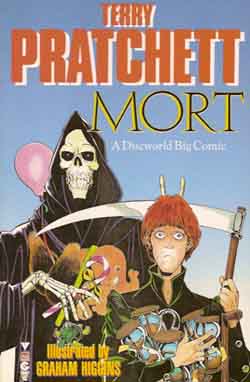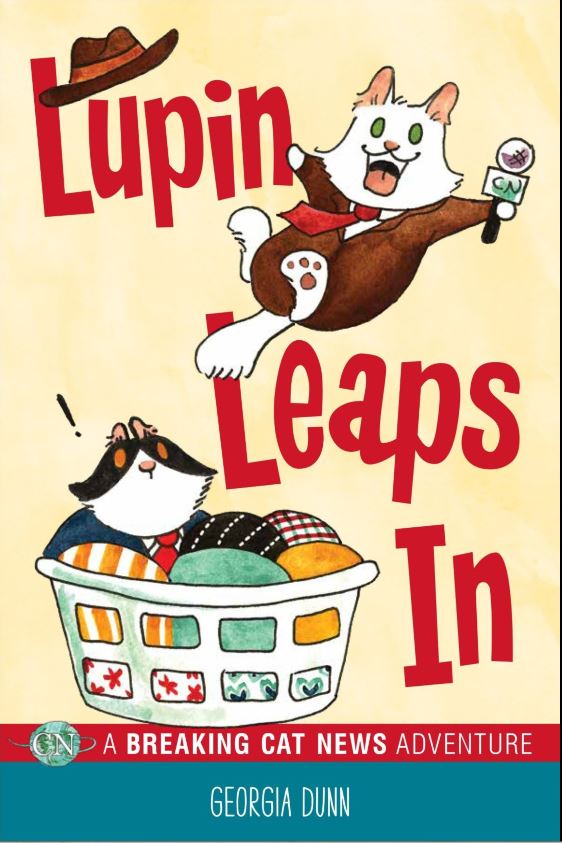
By Georgia Dunn (Andrews McMeel)
ISBN: 978-1-5248-5130-9 (HB) 978-1-4494-9522-0 (PB) 978-1-5248-5252-8 (eISBN)
Cats rule the world. Everybody knows it. Just ask social media and the internet.
Those of us “blessed†with appointed feline overlords also learn pretty quickly that they run the house too.
A few years back, illustrator and cartoonist Georgia Dunn found a way to make her hairy house mates earn their keep after watching them converge on a domestic accident and inquisitively – and interminably – poke their little snouts into the mess.
Thus was born Breaking Cat News: a hilariously beguiling comic strip detailing how – when no-one is looking – her forthright felines form their own on-the-spot news-team with studio anchor Lupin, and field reporters Elvis (investigative) and Puck (commentary) delivering around-the-clock reports on the events that really resonate with cats – because, after all, who else matters?
Here then, after far too long an interlude, is a second collection of outrageous, alarming, occasionally courageous but always charming – and probably far too autobiographical for comfort – romps, riffs and rather moving moments starring a growing family of people and the cats and assorted critters that share space with them.
If you’re a returning customer or follow the strip online, you’re already au fait with the ever-expanding cast and ceaseless surreality, but this stuff is so welcoming even the merest neophyte can jump right in with no confusion other than which the author intends……
Thus, you can learn that ‘The Man Has Lost his Tail’, the repercussions of ‘There are Other Cats in the Building!’ and that ‘The People Bought a Bird Magnet’, or question just why ‘The People Went Out and Bought us Expensive Cat food’…
Life meets art – and sports – in ‘The Baby is Finally Asleep, which means it’s time for…’ and ‘Reports of Slander are Coming in from the Living Room’ whereas ‘The People are having a Quiet Night In’ and other seasonal treats lead to the shocking revelation that ‘The Annual Gourd Sacrifice has begun’, and the terrible consequences as ‘We’ve Been Forced into Stupid Little Suits’…
Domestic equilibrium is eventually restored, but ‘There’s a Mysterious Lump in the Bed’ only piles on the drama as ‘The Ceiling Cats are Everywhere tonight!’. Typically, just as ‘The Woman is Reporting in the Nursery’ calms things down, the territory abruptly expands after ‘A Tower has been Erected in the Living Room!’ and chaos ensues when ‘There’s a Cricket Somewhere in the Apartment’…
Hilarity mounts with in-depth scoop ‘CN News Investigative Report: Who’s a Good Boy?’, scare-story ‘The Vacuum Cleaner is Back!’ and ‘Lupin got into a Pen’, while ‘The Man is Doing Push-ups’, ‘CN News Investigative Report: Why does the water in People Glasses taste So Much Better?’ and ‘Delicious Smells are coming from the Kitchen’ herald the approach of another festive occasion and a sharp change in tone after ‘A Tree Grew in the Living Room!’…
Dunn is a master of emotional manipulation and never afraid to tug heartstrings, and the trauma of a loved one being lost in the snow at Christmas hits like a hammer. ‘Elvis is Missing!’ is surprisingly powerful so mind out how you let the kids (and grandparents) read this unsupervised. Tough guys like you should be okay though…
The rolling news continues in ‘We’re Nearing 3 Hours since Elvis got Outside’ and ‘We’re 4 Hours into “Elvis Watch‒, but unlike the home-bodies you can see how the lost lad survives… and because of whom…
Events come to a head in ‘Puck Here. Still Awake’ and ‘Elvis is Back Inside!’ but the story can’t end until it ends happily, so ‘ELVIS WENT BACK OUTSIDE!’ sees the prodigal save his saviour in ‘There’s a Woman at the Door!’…
Christmas miracles safely covered, its back to business in ‘The Baby is Mobile!’, ‘The People have erected Hurdles!’ and ‘That Cat is in the Backyard again!’, before domestic issues come to the fore in ‘And in Local News, the People went Grocery Shopping’…
Another extended adventure begins after ‘Lupin found a Tiny Door in the Bathroom Closet’ escalates into ‘Lupin fell down a Laundry Chute or some nonsense’ and ‘Unexpected Developments in the Laundry Room!’ introduce a rival Hispanic feline reporting contingent…
The epic escapade only ends after ‘Elvis has just Joined Lupin in the Laundry Room!’ and ‘The People are Looking for Lupin and Elvis’, result in international cooperation before ‘Elvis and Lupin have to Escape the Laundry Room’…
Security re-established, what we’ll define as normality returns in ‘A Can of Whipped Cream has been heard in the Kitchen!’, ‘Elvis has been in a Standoff with the Man’s Feet for 45 minutes’ and ‘The People have brought home a Thing of Beauty’ and extra hilarity comes in ‘The Heat is On!’, ‘The Woman is Folding Laundry’ and ‘CN News Investigative Report: Why do open books make the best Cat Beds?’
Health matters are tackled in ‘Studies have shown Regular Ankle Reinforcement is crucial to People’s Confidence’ and ‘The People have dressed Elvis up like a Lamp’, after which ‘Another People Holiday is Happening’ sees the kitties go green and heralds ‘Signs of Spring have been spotted in the Back Yard!’
With the reporting team augmented by a new and jolly journalist, the year moves on. ‘Lupin is playing with the Baby’s Toys’ and hints of another human addition as ‘The Woman keeps getting up off the Couch’ are confirmed in ‘The Baby is turning into a Toddler’ and ‘The People are Missing!’. ‘There’s an Intruder in the Kitchen’ inevitable resolves into banner headlines when ‘The People have returned – with a New Baby!’
‘The Woman is trying to have Plants Again’ brings us back to solid ground and everybody shares human elation when the strip marks a real-world moment of triumph in ‘There are Rainbows Everywhere!’, after which ‘The Man is being attacked!’, ‘There’s been a Kibble Spill in the Kitchen!’ and ‘Cats everywhere have been locked out of the Bedroom’ restore the madcat madcap japery.
‘Lupin is Invisible when he’s in the Sink’ takes us to ‘It’s that hot time of the year again’ while ‘The Woman is sewing a Blanket’ sees Elvis take on more family responsibility before ‘A Can Opener was heard in the Kitchen’, ‘There’s a Great, Big Box in the Living Room’ and ‘THAT JUNE BUG IS BACK!’ add some action to the comedy. We’re in mellow mood for ‘Today has been Canceled, due to rain’ which only grows after ‘The People Bought a Tiny Cat Couch!’, before Puck reveals the astounding news that There’s a Button under the Computer Desk that makes the Man scream’…
‘This Reporter Read the News. What happened next will Shock you’ offers a bunch of clickbait and vox-pops before ‘There’s a Tear in the Kitchen window screen’ sparks a dispute in reportage methodology and ‘The Toddler is Sick’ leads to some in-depth number crunching… and sniffing.
A true crisis looms when ‘There has been a Hairball’ and anxiety increases as ‘Flowers are flying out of the Garden’, but tidings that ‘There’s a new Toy in the Bathroom!’ soon deescalates the tensions to conclude this segment of the far from fake fur news for a while…
Some In-Depth packages courtesy of Breaking Cat News: More to Explore! close out this tome starting with ‘Georgia Dunn’s tips to begin cartooning’, developing into ‘How to draw the Good Boys of BCN’ – following from rough pencilling to inks and colour – and splendidly culminating with ‘Drawing Face Expressions’, ‘Drawing your pet as a Reporter’ and expanding the franchise to ‘Other News Affiliates’ as fish, birds, rats, lizards, dogs and ferrets join the quest for truth and fun…
Smart, witty, imaginative and deliciously whimsical, Lupin Leaps In is a glorious all-ages romp of joy. Breaking Cat News is a fabulously funny, feel-good feature rendered with great artistic élan and a light and breezy touch that will delight not just us irredeemable cat-addicts but also anyone in need of good laugh. Chase it! Catch it!, Who’s a Good People?
© 2019 Georgia Dunn. All rights reserved.


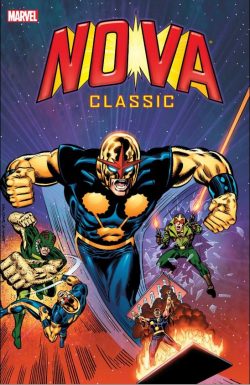

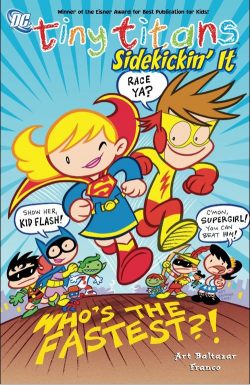

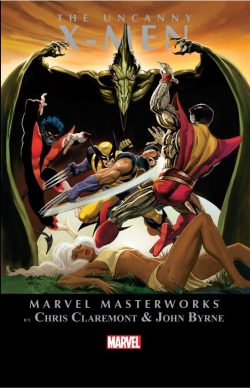


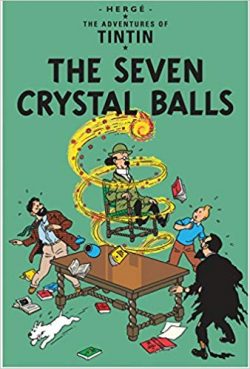
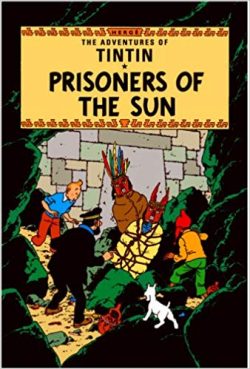
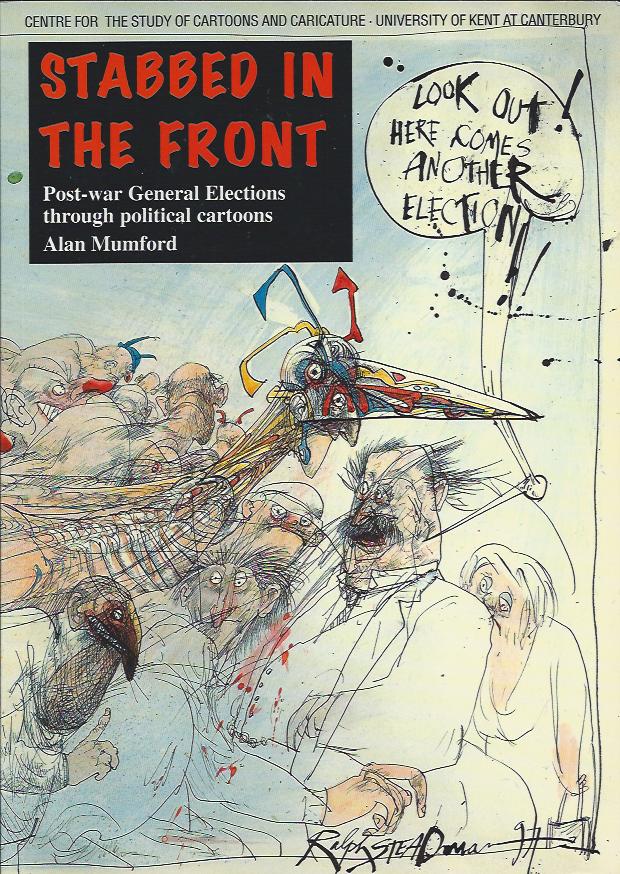
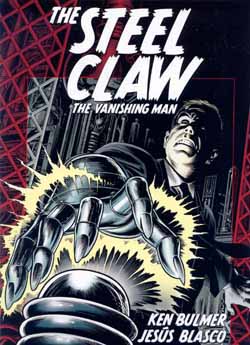 ,â€
,â€